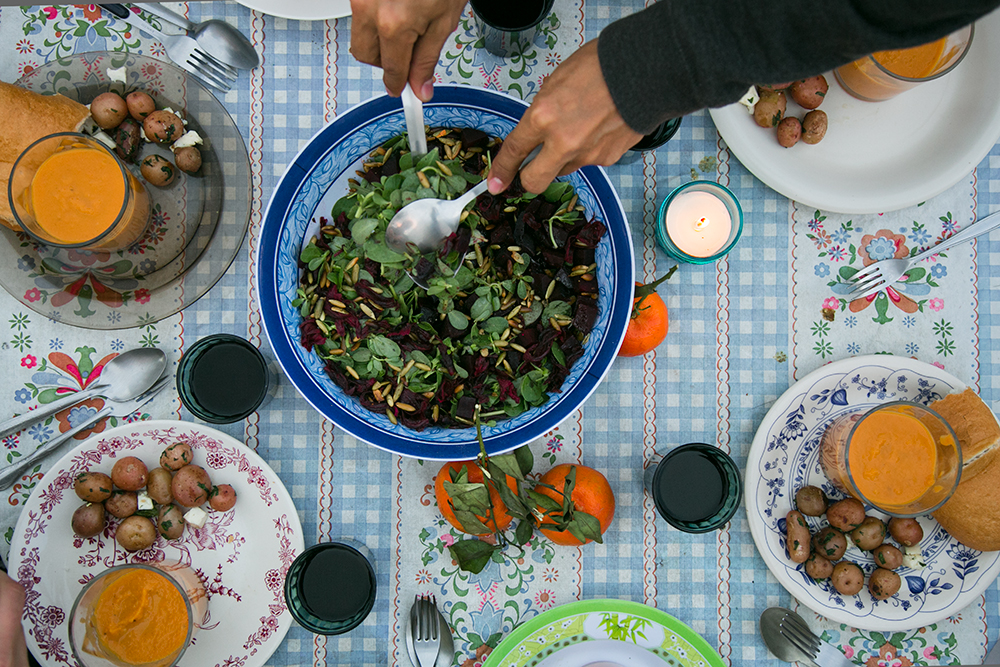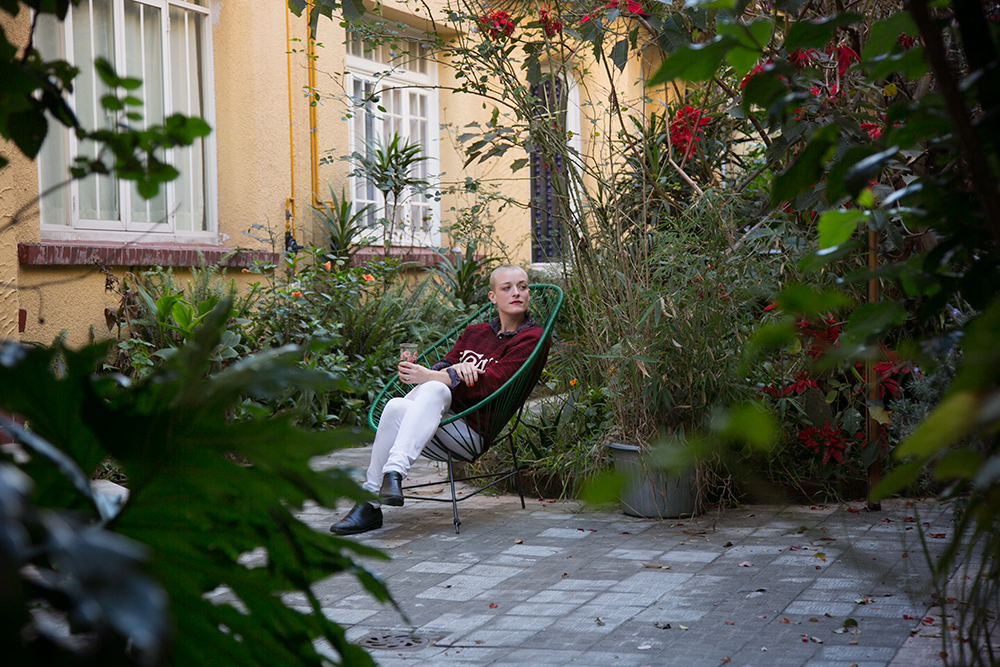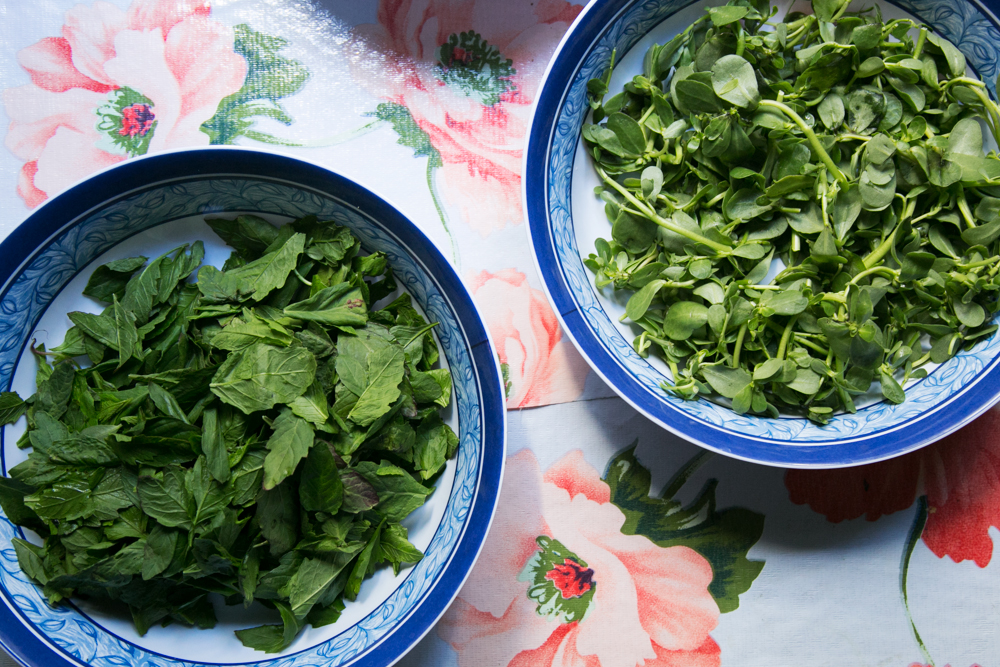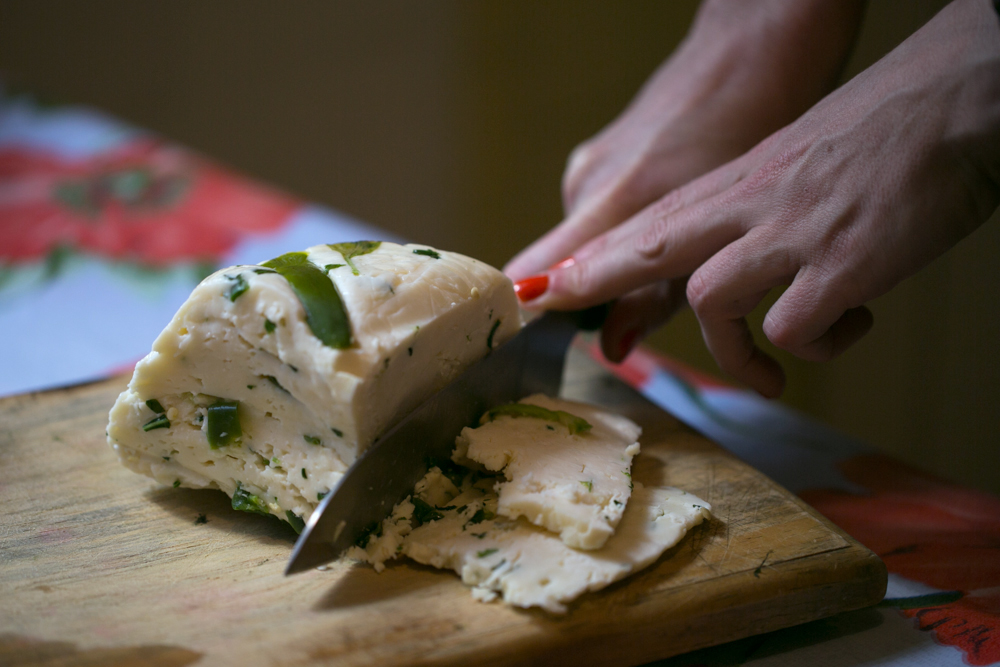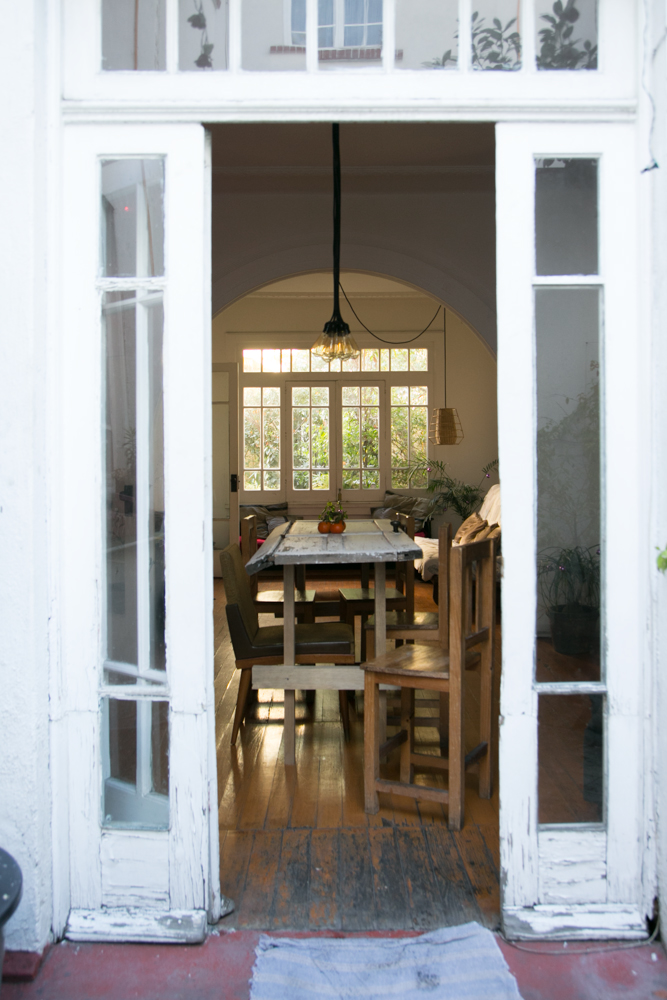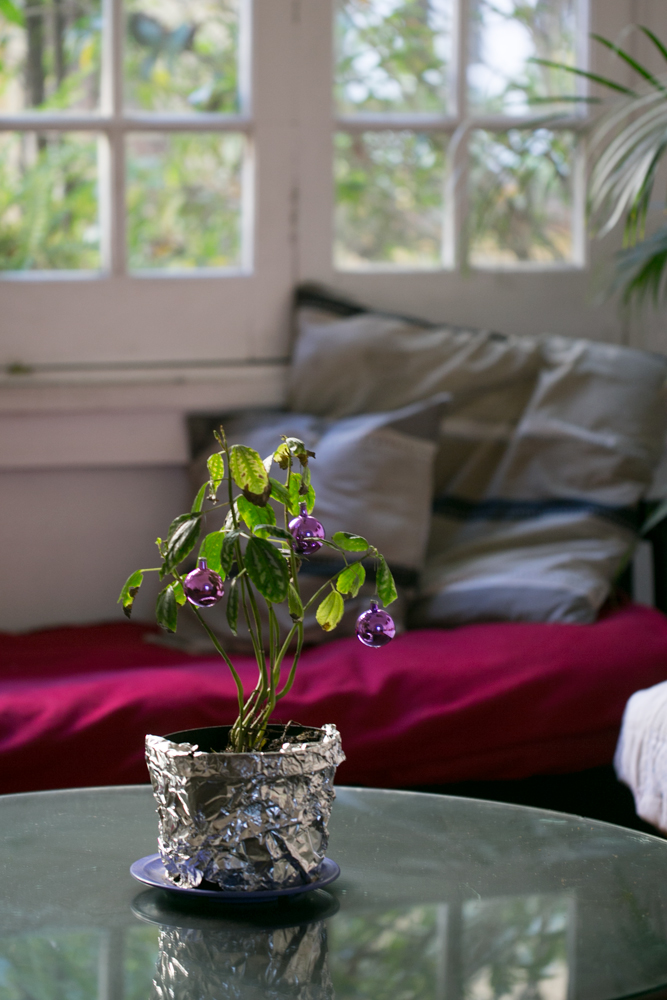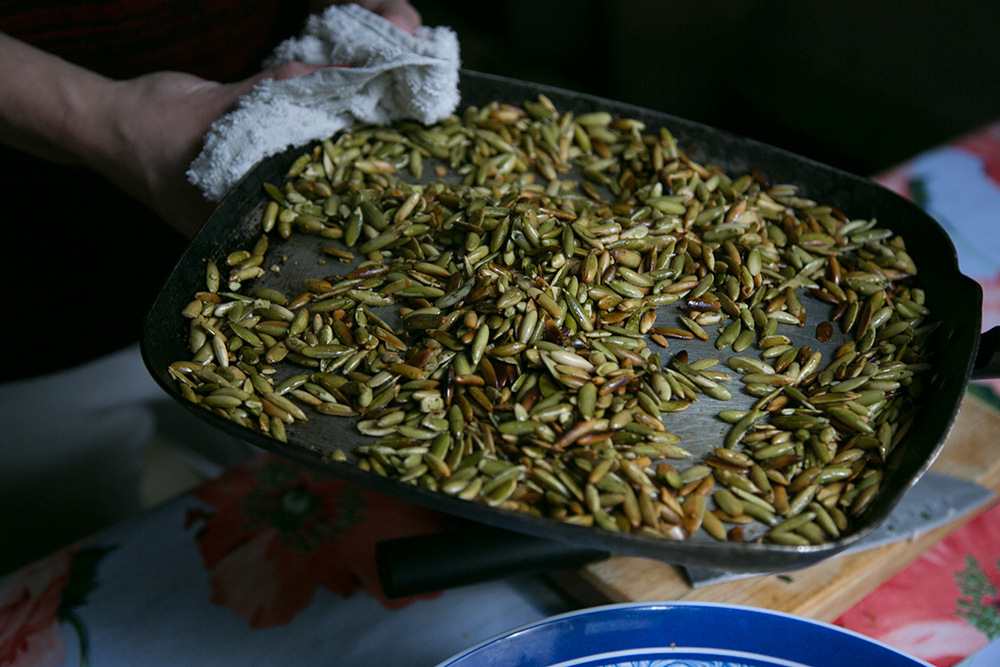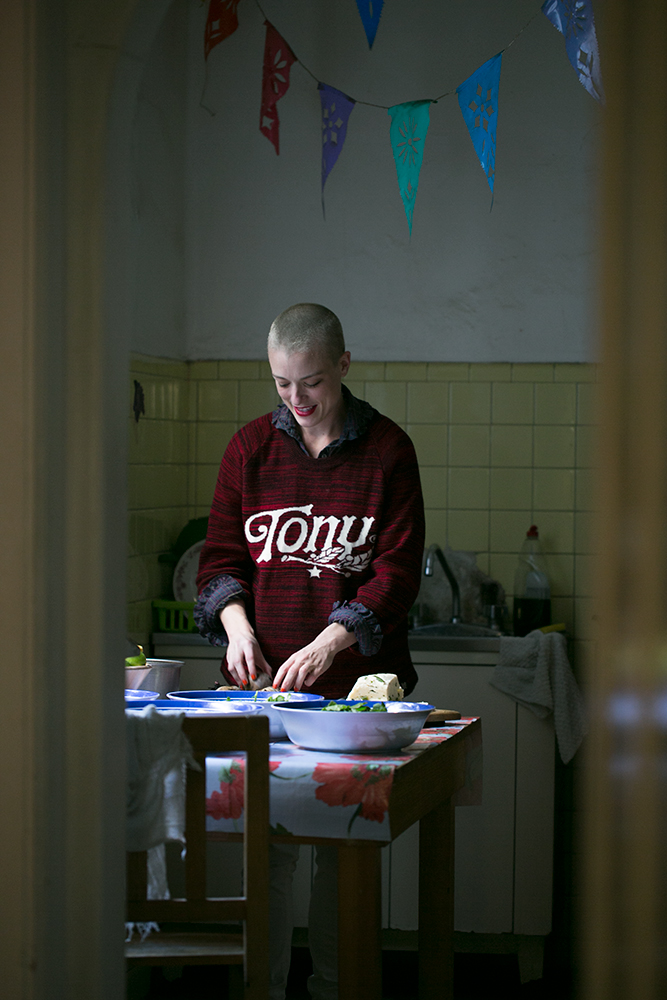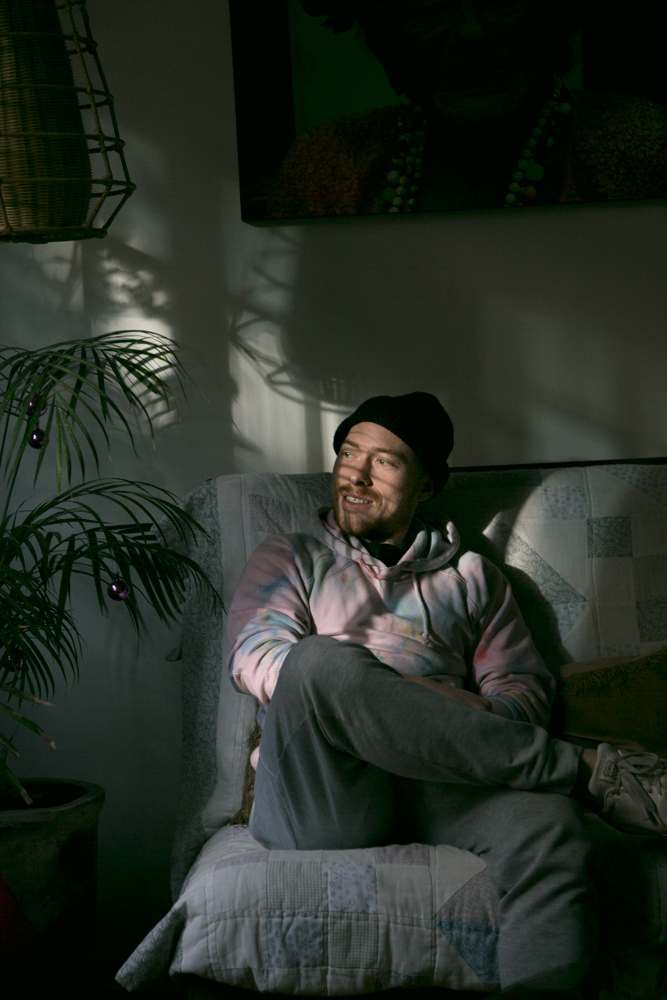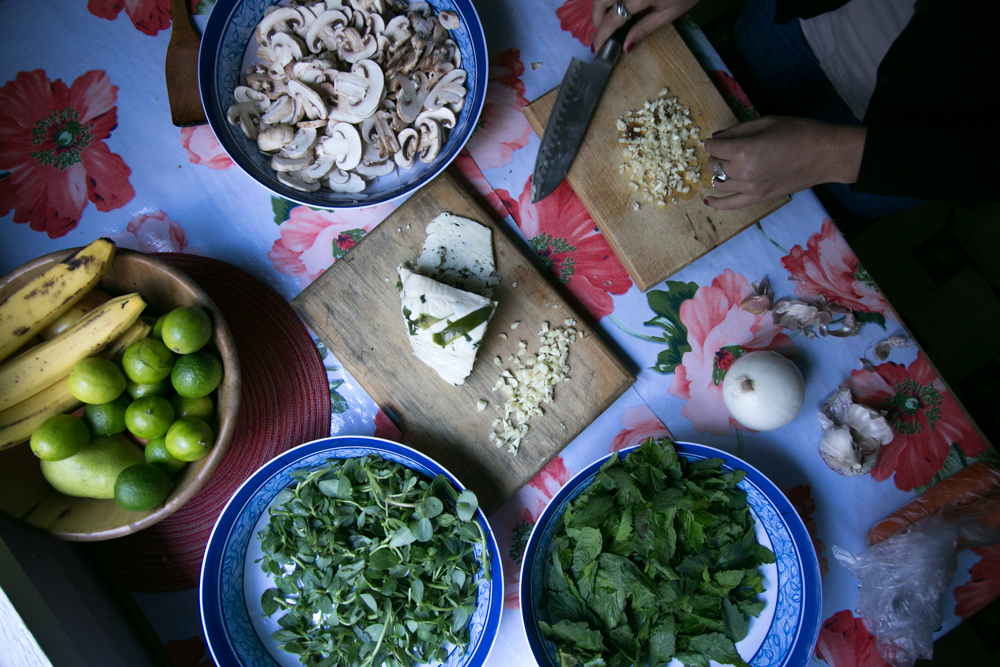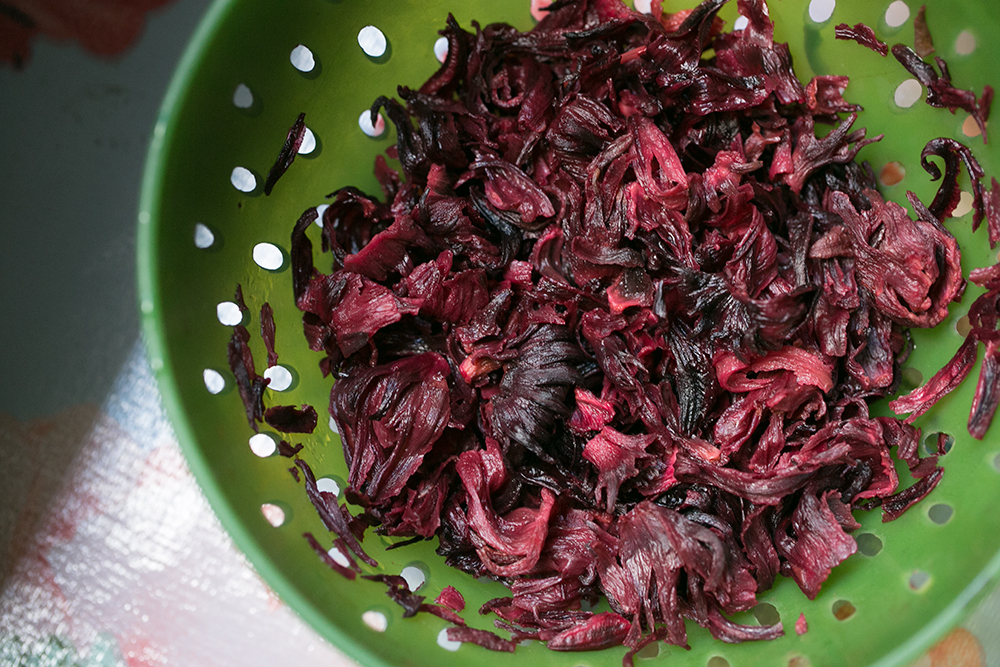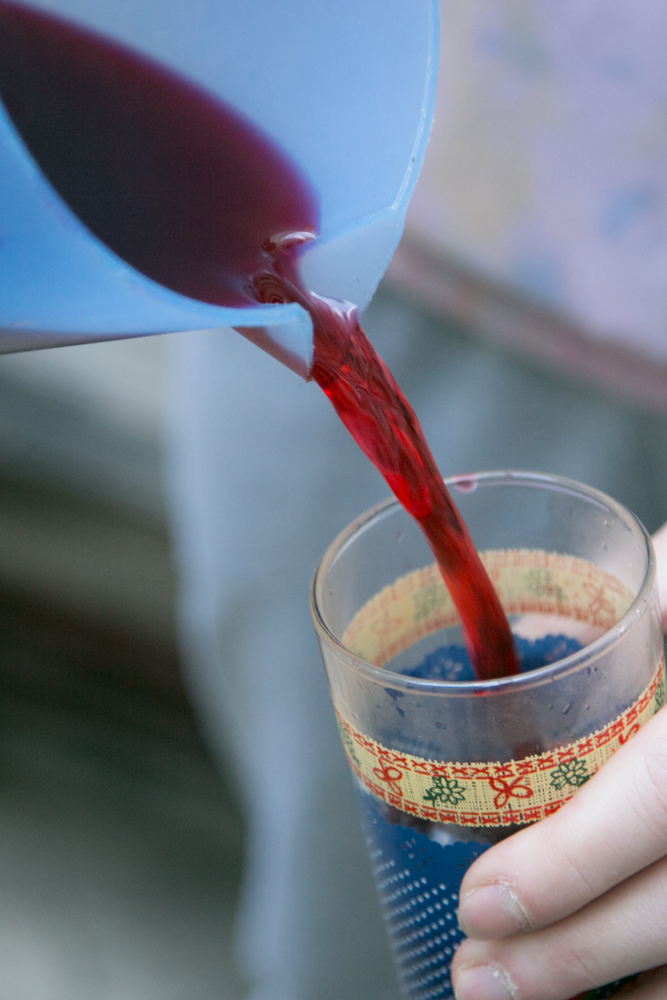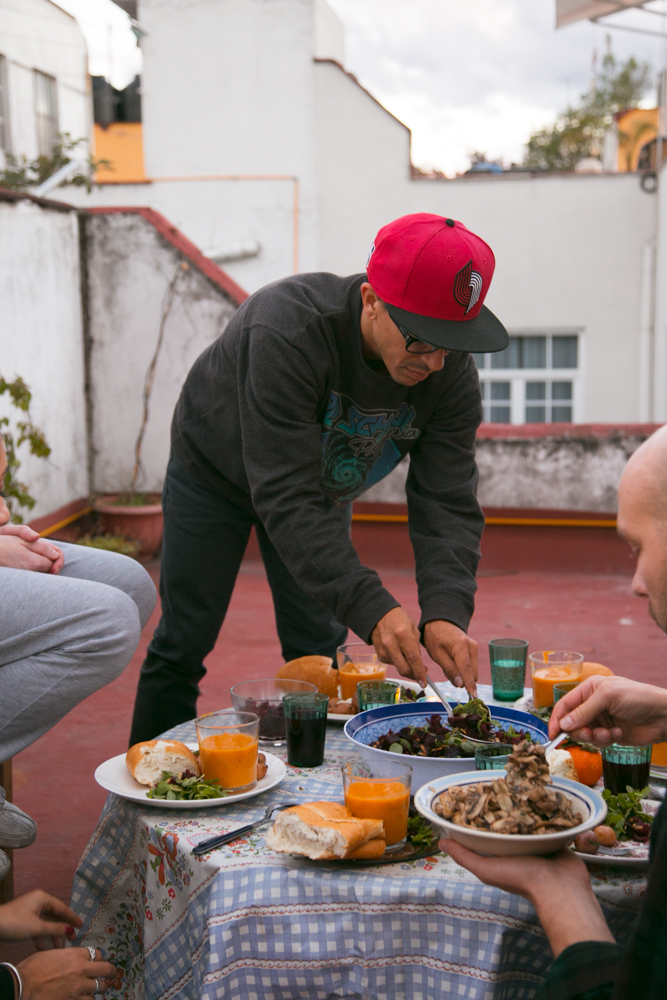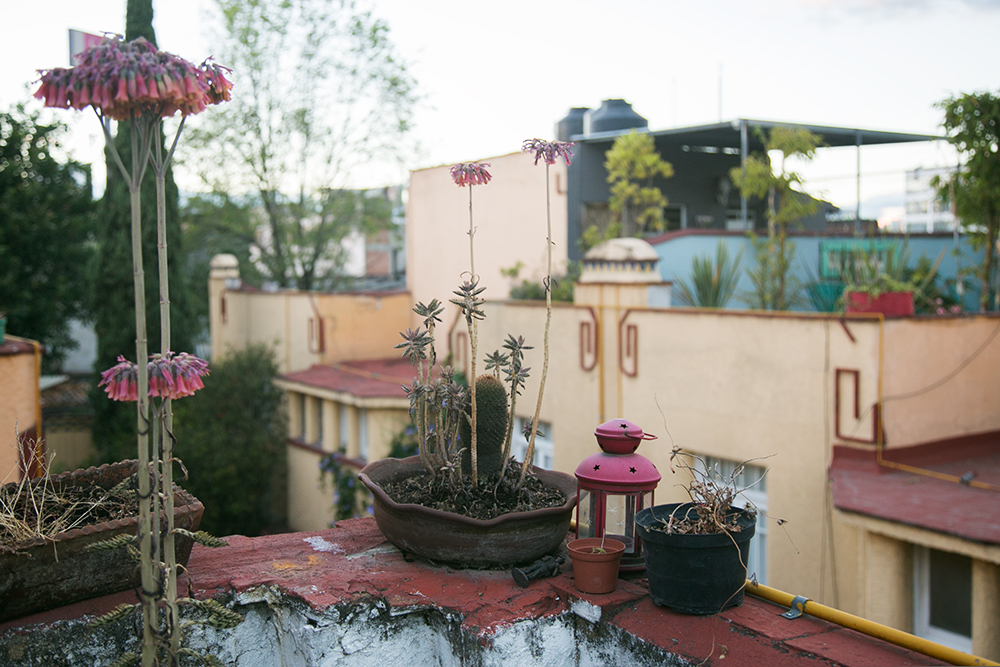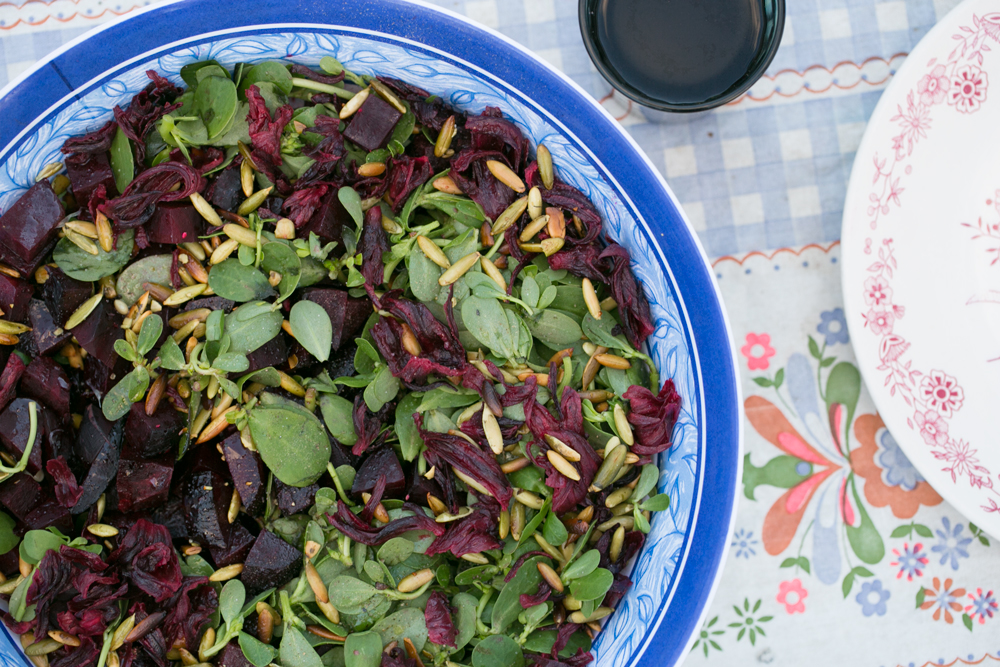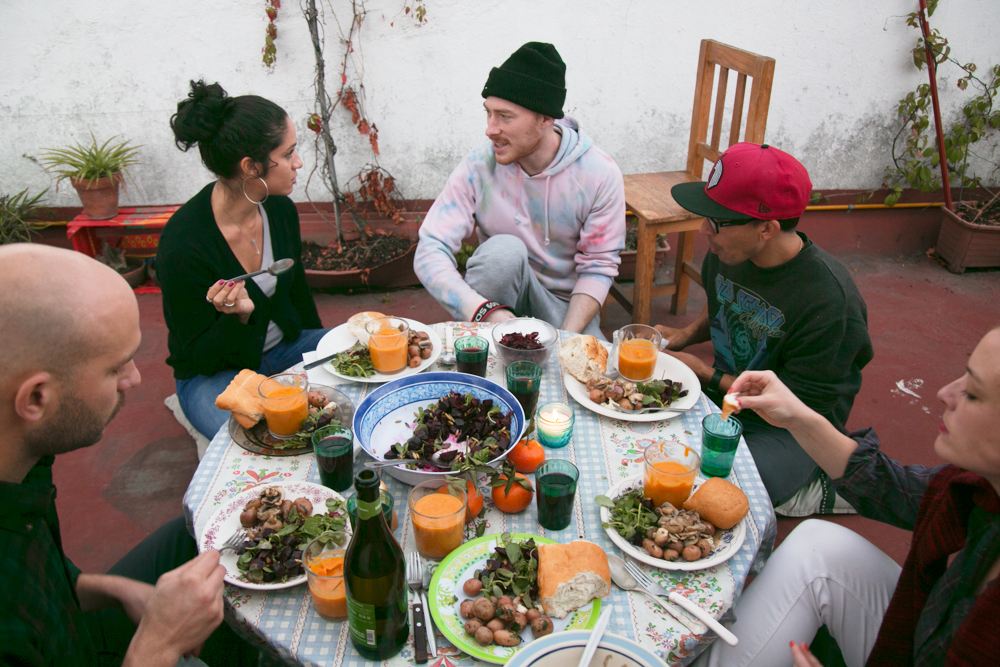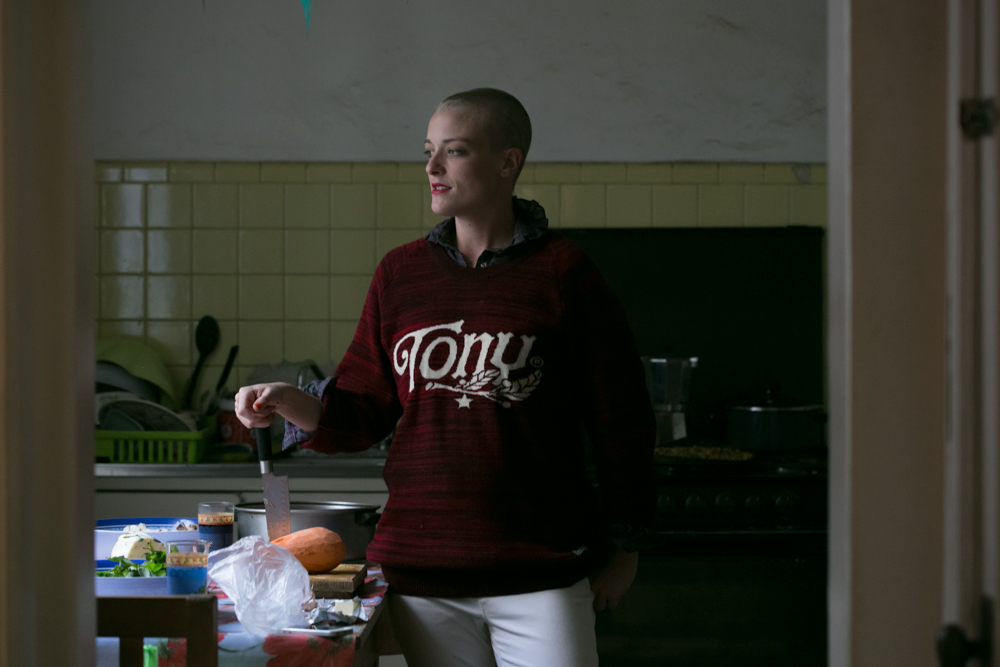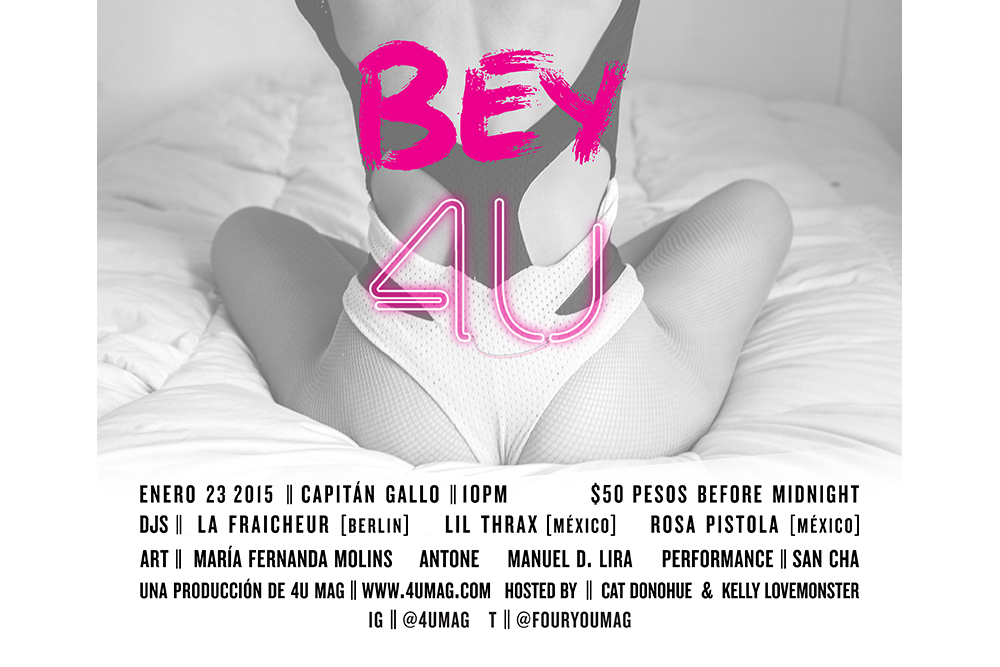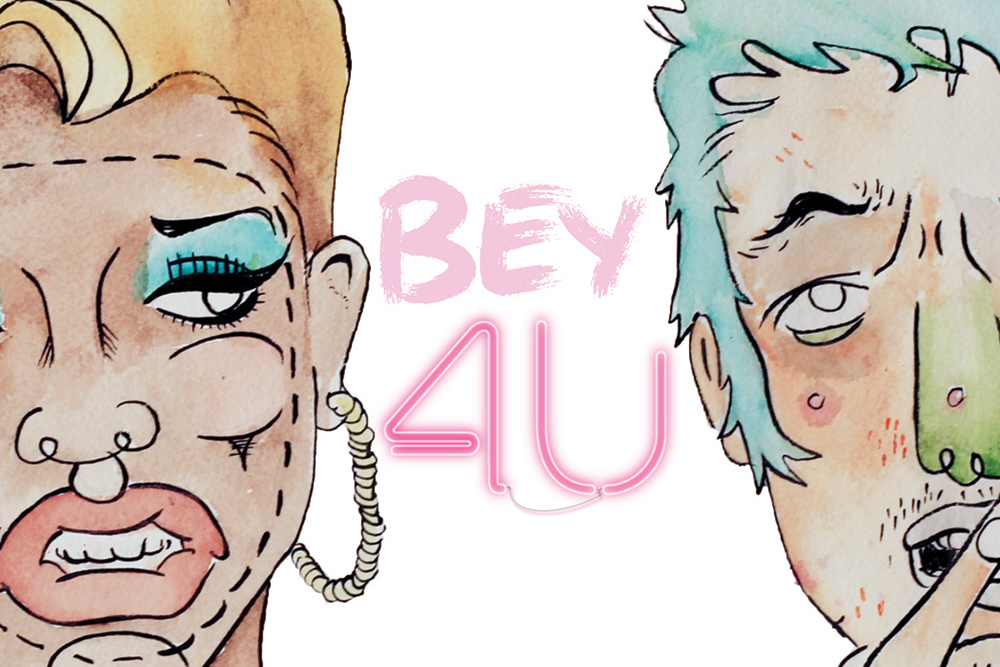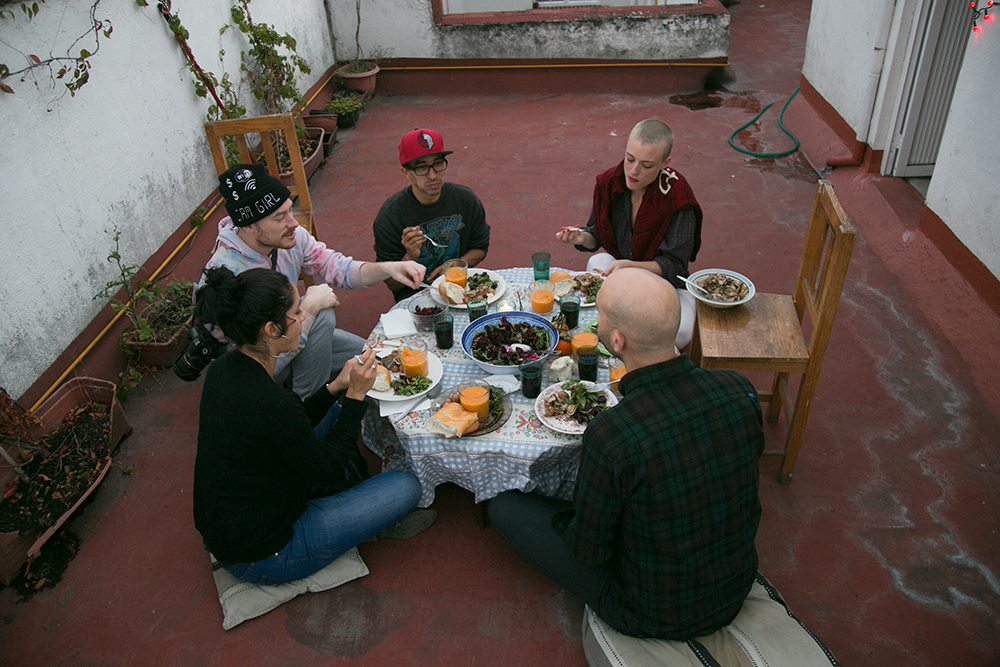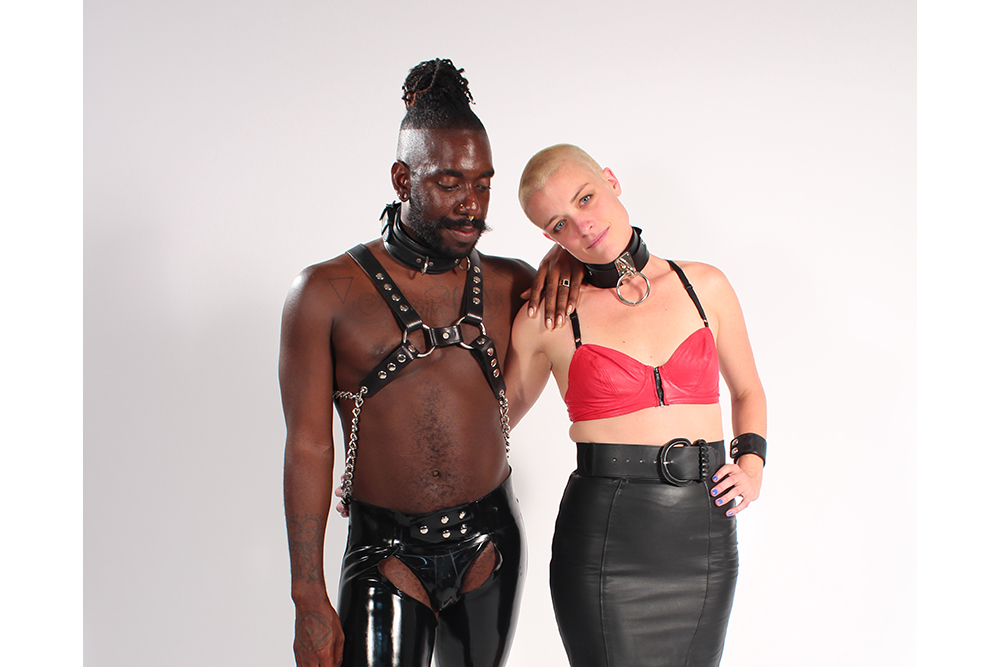Purslane, Beets, Pepitas and Sautéed Hibiscus Flowers
Caitlin Donohue’s Hibiscus Salad (Mexico City)
POSTED UNDER
- Healthy Salad,
- Mexico City,
- Travel
NOTES
Requires specialty ingredients (purslane and hibiscus), but worth the effort. Hibiscus flowers are used in a popular Mexican beverage called Agua de Jamaica — a strong brew of hibiscus flower tea sweetened heavily with sugar. The hibiscus makes a tart, tasty and healthy beverage if you cut back on the sweetener. And, the rehydrated flowers can then be used for a salad (I have a feeling you could candy them as well). Purslane is one of the most nutritious wild foods you can eat. Grow it yourself, forage for it, or look for it at your local farmers market.
RECIPE
DIFFICULTY
MODERATE
SERVES
6
PREP TIME
60 MINS
Hibiscus Flowers/Tea
-
3/4cupdried hibiscus flowers
-
48ozwater
-
sweetener of choice (for tea)
Salad
-
2 1/2cupspurslane
-
4mediumbeets, tops removed
-
1/2cupraw pepita seeds
Dressing
-
1tbsfresh lime juice
-
1tsphoney
-
3tbsolive oil
-
salt and pepper
POSTED UNDER
- Healthy Salad,
- Mexico City,
- Travel
I arrived in Mexico City on December 24th, in denial of the fact that the majority of this Catholic country would shutter their doors for the Christmas holiday. Instead of scouring the streets for the one or two lone active taco stands, I headed over to the home of writer and magazine editor, Caitlin Donohue. With her roommate Damien Moreau, we cooked up a vegetarian Christmas feast of our own, happily consumed on their rooftop with friends. This beat every previous Christmas spent eating Chinese food and movie popcorn by leaps and bounds.
Caitlin has lived in Mexico City for the last six months, where she writes for the international online publication Rookie Magazine, and where she manages and edits a culture mag entitled 4U Mag that she started with SF based Kelly Lovemonster. For both publications, Caitlin writes about sex, music and nightlife. In her work with Rookie, she has the opportunity to introduce young women to important content that they deserve to access, but will never find in YM or 17 Magazine (STIs, labor unions, shaving your head and gender-bending performance art are all topics of interest). At 4U, Caitlin is creating an international network of artists and expert party people who contribute incredible content ranging from make-up how-to videos hosted by renowned SF queens, to free “mixtapes” put together by DJs and musicians in the underground hip-hop scene.
If by some kind act of god you find yourself in Mexico City at the end of this month, please, attend 4U Magazine’s first ever Mexico City event — Bey 4U, a massive party in tribute (and appropriation) of Beyoncé’s influence on 2014 (the flyer is in the slideshow above).
Caitlin Donohue in Her Own Words
Julia Sherman: How did you become the independent thinker that you are?
Caitlin Donohue: I grew up in the Sunset neighborhood of San Francisco. My parents are both academics — my mom is a labor educator who is also an elected official for the AFL-CIO, and my dad is a radical economist. I was a labor union organizer from when I was 17 until I was 21. I worked on the Obama campaign and became irrevocably disillusioned by machine politics. I spent the majority of my early 20s traveling — Australia, England, Central and South America.
JS: When did you start writing?
CD: While I was moving around I realized through writing about culture, I could bring people together. When I was 24, I moved back to San Francisco and the culture editor and nightlife columnist of the San Francisco Bay Guardian, Marke B., took me on as his assistant. He eventually became the paper’s publisher, and I eventually wound up as culture editor.
JS: What did that job entail exactly?
CD: I was in charge of the paper’s lifestyle section (food, education, sex, weed — the Guardian was a really radical publication). I became intimately familiar with the city’s radical communities, and I moved in with Tom, aka “DJ Carnita” Temprano. My time in SF’s queer nightlife community made me the rabid feminist and lover of eye-catching outfits that I am today. Sadly, San Francisco’s radical culture has changed a lot since I was raised there, though.
JS: Why did you move to Mexico City?
CD: I moved to Mexico City to learn more about one of the world’s largest metropolises, to perfect my Spanish, to expand my global community, and to live in a city that I could actually afford.
JS: How would you compare Mexico City to other cities you have lived in?
CD: DF (Mexico City) is bigger than any city I’ve ever lived in, and has a history of violence and utter tumult, from genocide to earthquakes to endless presidential coups. All that instability has made the people who live here able to function incredibly well in seemingly chaotic scenarios.
JS: What is your favorite thing to eat in DF?
CD: TAMALES from street vendors. They usually run for around 12 pesos, so cheap. Torta de tamal is a Mexico City specialty — it’s a tamale inside a bread roll (carbs on carbs, I love it). I’m a vegetarian so I go for the rajas con queso variety. I also love the fresh juice stands; you can get massive cups of carrot, tangerine, and orange juice for 20 pesos.
JS: What inspired you to apply to work at Rookie?
CD: I love that Rookie’s voice is that of a wildly intelligent teenager girl (really, that of Tavi Gevinson, the editor in chief, who will someday rule the world.) The content that Rookie publishes dwarfs that of most blogs, whose posts’ relevance might withstand a day, or a few hours. Rookie never panders. We can’t, really. Teenage girls are the hippest creatures on this earth; they keep us in check.
JS: Judging by the list of contributors, you seem to have some pretty incredible coworkers.
CD: One of the most brilliant things about Rookie is the way its staff supports each other — that empowering voice on the site isn’t an affectation at all. It comes from a group of women working in the media that bolster each other at every turn. My co-staffers give me the courage I need to write about the radical stuff that I do.
JS: What kind of projects do you produce for the magazine?
CD: I originally applied for an editor position at Rookie; when I didn’t get that, they suggested I become a staffer. I now contribute to weekly posts, to the Rookie Yearbook, music and film reviews, and I work with photographers and illustrators on original features. My first assignment for Rookie was a collaboration with photographer Teen Witch about young drag queens in San Francisco.
JS: Your subject matter ranges from Labor Unions to Herpes for Rookie. What is your motivation when pitching of content for a younger audience? It seems like such a wonderful opportunity to be able to have a space to inspire younger women to think outside the box when it comes to sex, gender etc.
CD: I write about the stuff I wish I had had access to when I was 14. I often draw from the most painful moments of my youth. My piece entitled Club Herpes was an important one for me. When I got that STI I thought my life was over — it was only when I discovered that other people I knew had “the herp,” that I knew I would survive. I’m hoping that article lives on in the Internet wilderness, so that any girl with Google can access it in her time of need.
JS: How did you start 4UMag?
CD: I started 4U with my co-editor Kelly Lovemonster, the day after I left The Guardian. I was frustrated that the last independent print publication in the city had been corporatized; the SF art and culture scene deserves better. Initially, I thought of 4U magazine as a kind of lifestyle component to Kelly’s Swagger Like Us queer hip-hop party — a super stylish, radical bastion of hip-hop culture in San Francisco that celebrates women and queers. Since then, and since my move to Mexico City, we’ve developed a global network of amazing contributors living on the cutting edge of sex issues, fashion, music, etc.
JS: What role does music play in 4U?
CD: LGBT-made hip-hop has always struck me as a really important counterpoint to the grandstanding straight guy who is the conventional face of that genre. Women and queers have been involved in hip-hop music since the beginning, but we still see a lot of machismo in hip-hop concerts and parties. The music of female and queer MCs reinforces the idea that hip-hop is a musical genre that is all about partying, social dissent and love. At 4U, we do a free Mixtape series available on Soundcloud, that features DJs and producers who embody that attitude.
JS: 4U is about to throw a massive party on January 23rd dedicated to Beyoncé. Why Beyoncé?
CD: 2014 was Beyoncé; Beyoncé was 2014. She changed the profile of feminism, she became one of the savviest female POC businesswomen of all time. Her outfits. Her music. We put together a Beyoncé themed issue for 4U Magazine so that our contributors had an opportunity to express just how “Queen Bey” has influenced and sometimes confused us. The party was a no-brainer and includes talented friends like DJ Fraicheur from Berlin, punk-drag performer San Cha from Oakland, hostess extraordinaire, Kelly Lovemonster, Mexico City’s finest DJ-fashion designers Rosa Pistola and Lil Thrax … the list goes on.
It’s basically going to be the most fun thing ever if you’re really down to dance with a bunch of hella hot people, to a ton of Beyoncé remixes. Be sure to wear a bodysuit.
